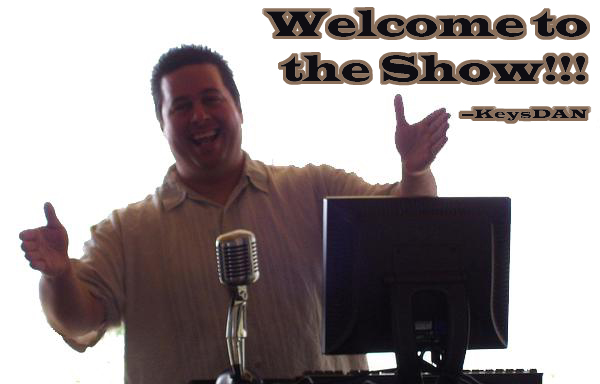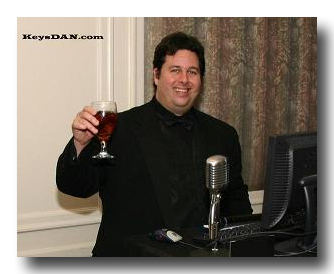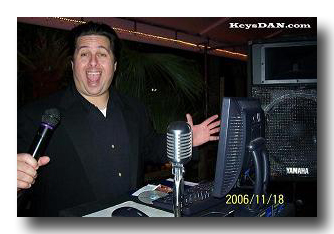mas'ter of cer'emonies a person who directs the entertainment at a party, dinner, nightclub, radio or television broadcast, or the like, acting as host and introducing the speakers or performers. |
|
 |
|
A Master of Ceremonies is a great idea for your reception if you are worried at all about the timing and organization of the day, he will take all the problems on board leaving you free to enjoy the day, knowing that the reception is in capable hands. |
|
A Master or Mistress of Ceremonies or MC (sometimes spelled emcee), sometimes called a compère or an MJ for "microphone jockey," is the host of an official public or private staged event or other performance. The MC usually presents performers, speaks to the audience, and generally keeps the event moving. The MC sometimes also acts as the |
 |
protocol officer during an official state function. |
|
The term originates from the Catholic Church. The Master of Ceremonies is an official of the Papal Court responsible for the proper and smooth conduct of the elegant and elaborate rituals involving the Pope and the Sacred Liturgy. He may also be an official involved in the proper conduct of protocols and ceremonials involving the Roman Pontiff, the Papal Court, and other dignitaries and potentates. Examples of official liturgical books prescribing the rules and regulations of liturgical celebrations are Cæremoniale Romanum and Cæremoniale Episcoporum. |
|
 |
The office of the Master of Ceremonies itself is very old. According to the Catholic Encyclopedia, the most ancient ceremonials and rituals of the Catholic Church are the so-called Ordines Romani. Names of Masters of Ceremonies are known since the late Middle Ages (15th century) and the Renaissance (16th century). However, copies of books prescribing the forms of rituals, rites and customs of pontifical |
ceremonies are known to have been given to Charles Martel in the 8th century. The rules and rituals themselves are known to have been compiled or written by the pontifical masters of ceremonies whose contents date back to the time of Pope Gelasius I (492-496) with modifications and additions made by Pope Gregory the Great (590-604). It is reasonable to assume that the ceremonials themselves pre-date Gelasius I and the origins of the Master of Ceremonies may have developed from the time Emperor Constantine the Great gave the Lateran Palace to the popes (324) or from the time Christianity became the official religion of the Roman Empire (380), and was influenced no doubt by imperial practices, customs and norms. However, documentary evidence from the late Roman period are scarce or lost. The ceremonies and practices of the Byzantine emperors are also known to have influenced the papal court. The accumulation of elaboration and complication since the Renaissance and Baroque eras were carried well into the 20th century until some of the ceremonies (i.e. the court, the rituals and norms) were simplified or completely eliminated by Pope Paul VI in the 1970s after Vatican II; much of the Renaissance pomp and ceremony has been completely abandoned by the popes of the modern era. |
|
 |
At a large Catholic church or cathedral, the Master of Ceremonies organises and rehearses the proceedings and ritual of each Mass. He may also have responsibility for the physical security of the place of worship during the liturgy. At major festivities such as Christmas and Easter, when the liturgies are long |
and complex, the Master of Ceremonies plays a vital role in ensuring that everything runs smoothly. |
|
The function of the Master of Ceremonies is to ensure the orderly development of events at the reception. From the time of arrival of the first guests until the final statement following the departure of the bride and groom, the Master of Ceremonies should serve as an unobtrusive organizer. Some of the major duties of the Master of Ceremonies include:
|
|
| The Master of Ceremonies & Toasts | |
Sponsors
http://conwayyellowcab.com/
http://djlittlerock.com/
http://keysdan.com/
http://mybusinessneedshelp.com/
http://radiokeysdan.com/
http://radiowhat.com/
http://keysdan.com/DJLittleRock.com/
http://keysdan.com/HollandAR.org/
http://keysdan.com/JustTryItKaraoke.com/
http://keysdan.com/RadioKeysDAN.com/
http://keysdan.com/RadioWHAT.com/
http://keysdan.com/MyRadioExito.com/
http://keysdan.com/RadioRitmoLaFabulosa.com/




